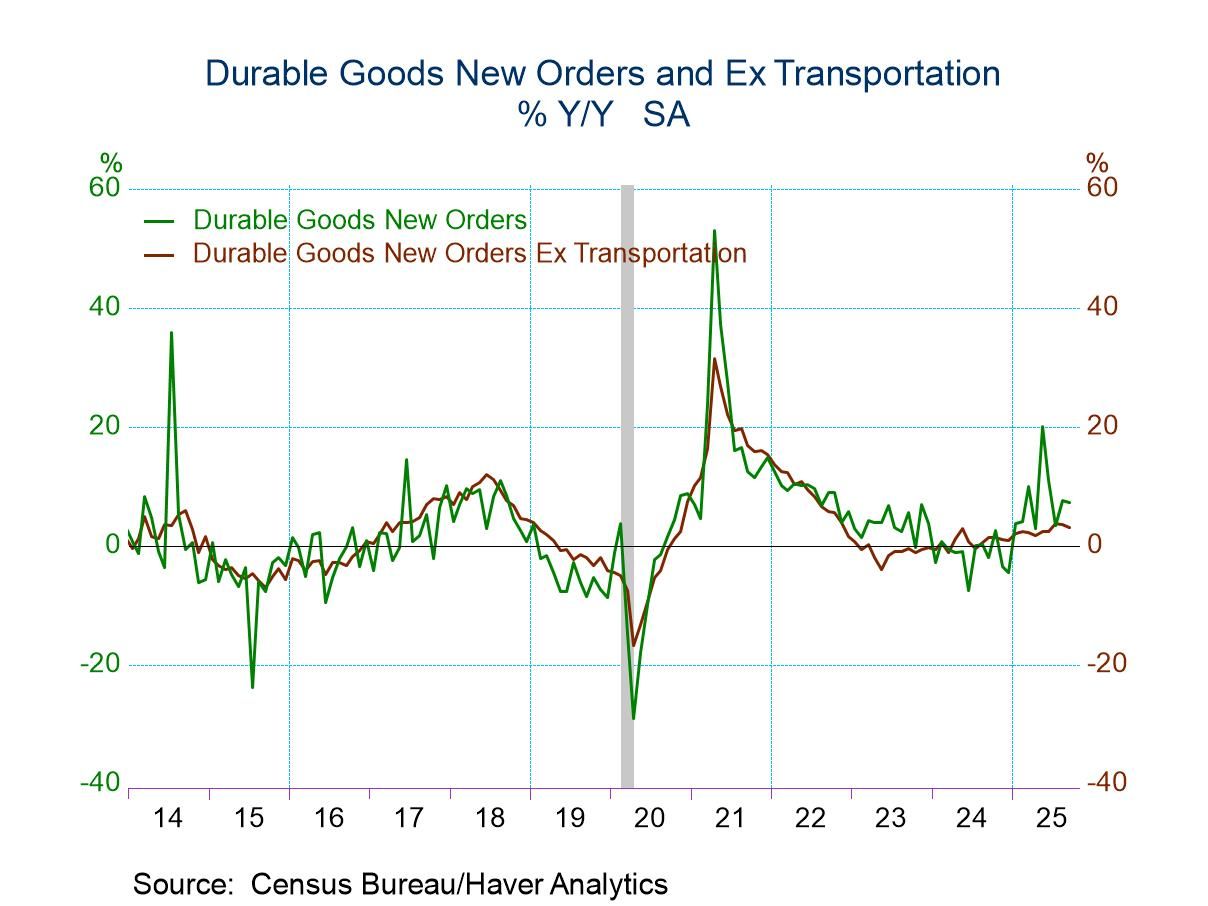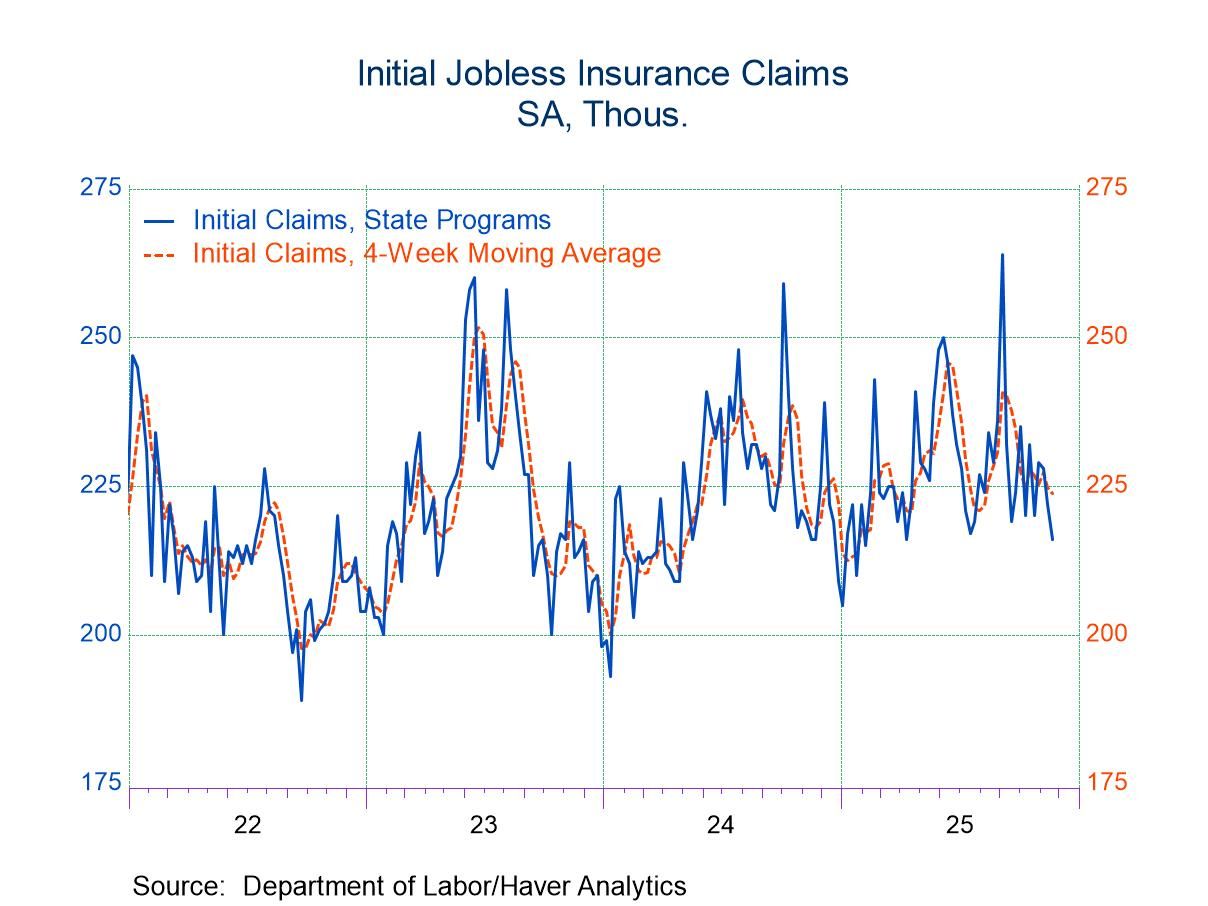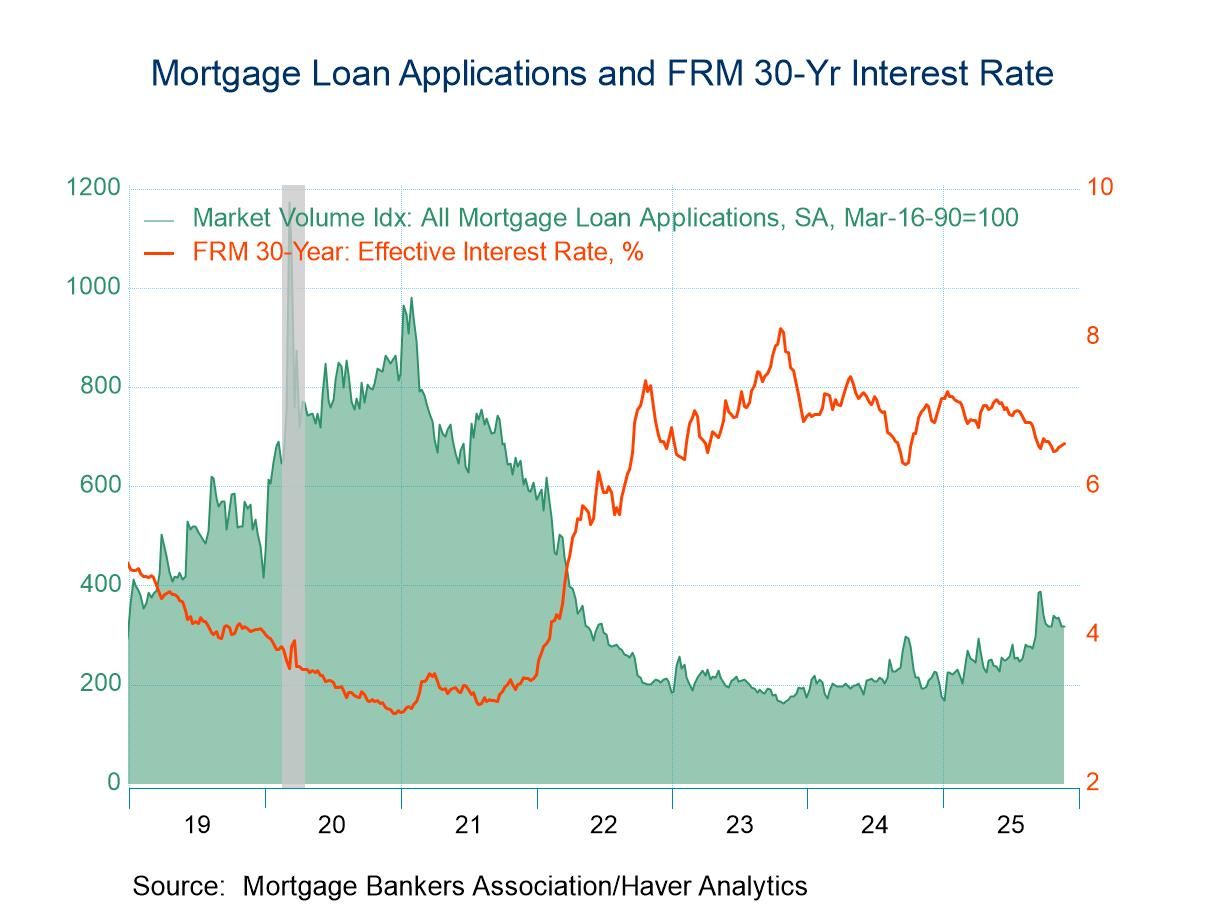U.S. Trade Deficit Narrows in June; the Smallest Since Sept. ’23
Summary
- $60.2 bil. trade deficit, reflecting $85.9 bil. goods deficit & $25.7 bil. services surplus.
- Exports -0.5% m/m, down for the second consecutive month.
- Imports -3.7% m/m, down for the third straight month.
- Real goods trade deficit narrows to $84.6 bil. after May’s widening.
- Goods trade deficits w/ China at a record low, w/ EU at a June ’13 low, and w/ Japan at a 4-month low.
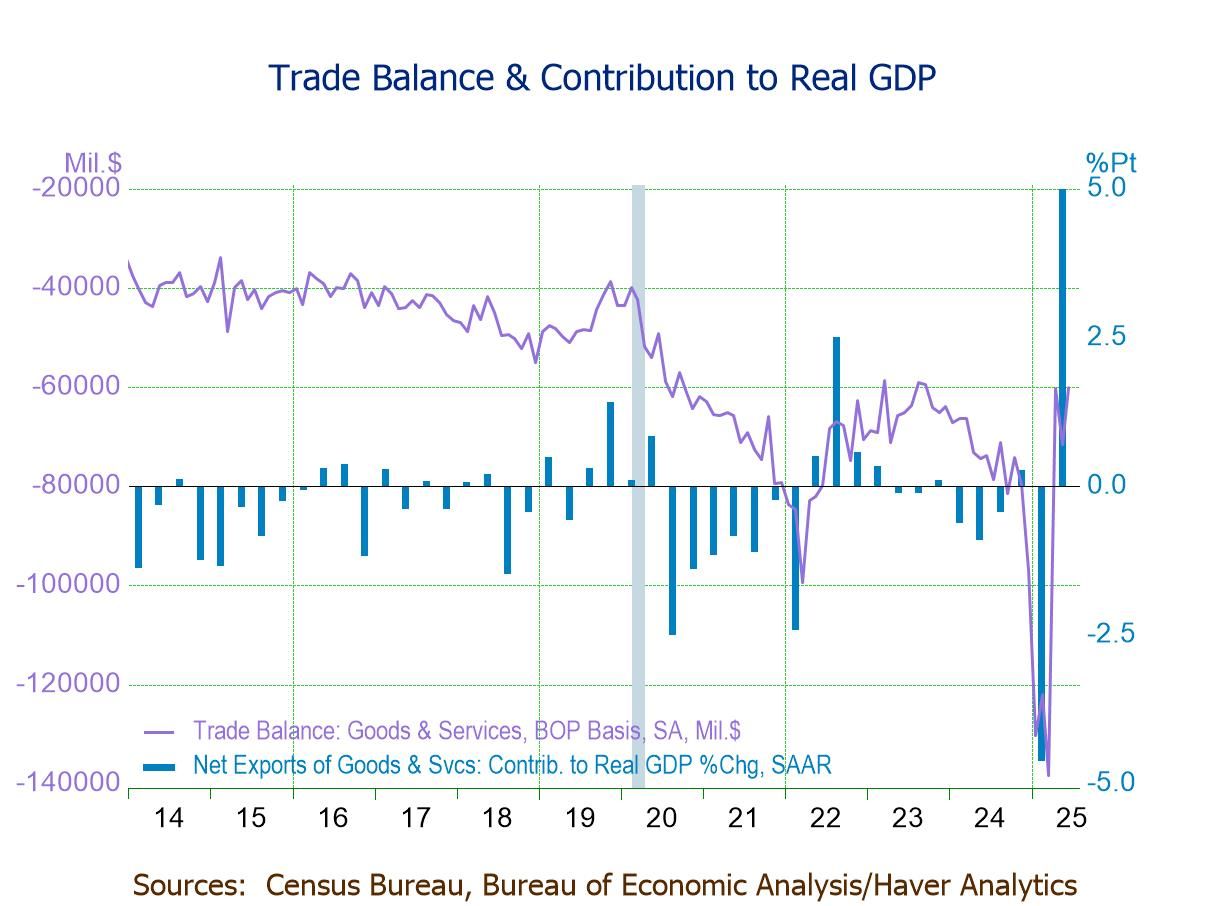
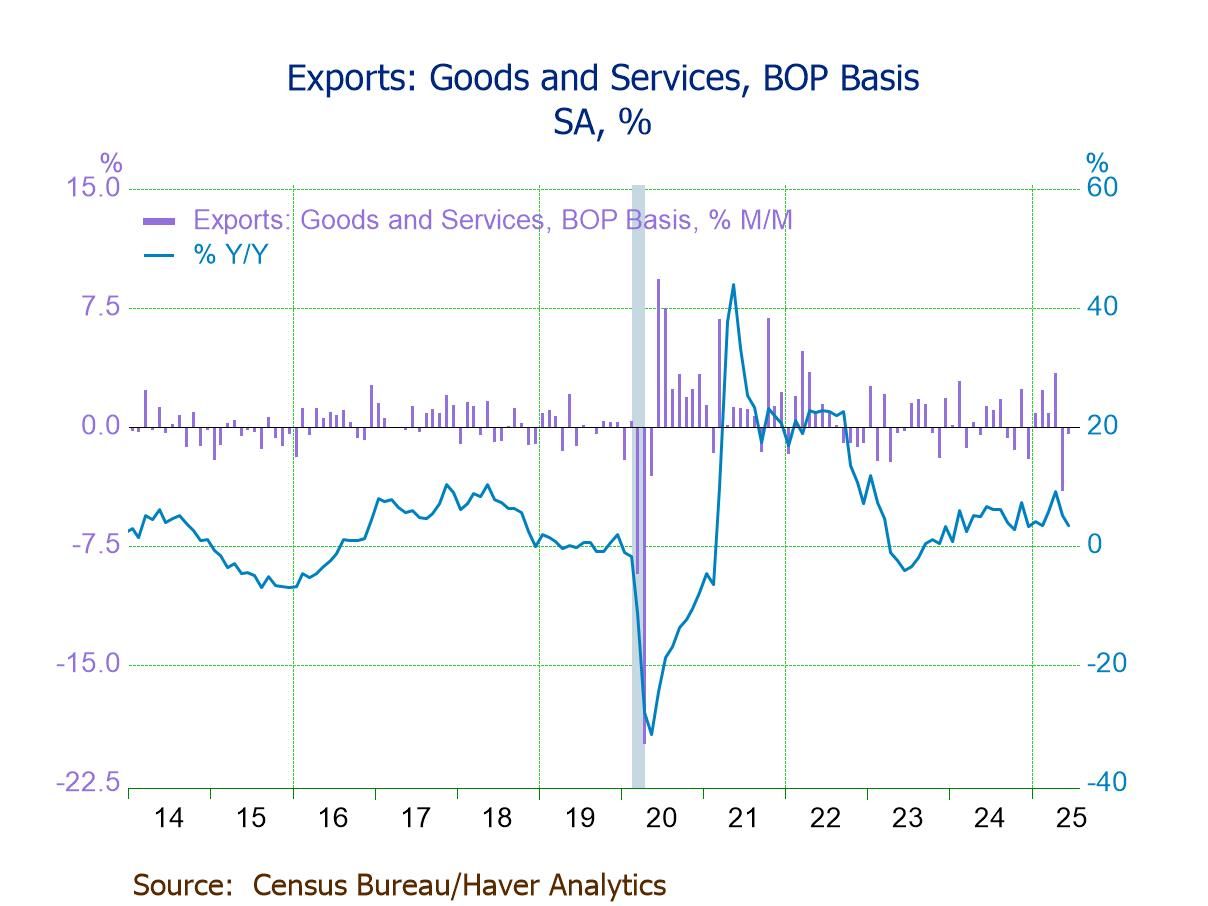
The U.S. trade deficit in goods and services (BOP basis) narrowed to $60.18 billion in June after widening to $71.66 billion in May ($71.52 billion originally), according to the U.S. Census Bureau. This was the second month in three in which the deficit had narrowed. The June deficit was the smallest since September 2023 and much smaller than the $73.89 billion in June 2024. A deficit of $61.6 billion had been expected in the Action Economics Forecast Survey. Exports declined 0.5% m/m (+3.3% y/y) in June following a 4.1% drop in May (-4.0% previously) and four successive m/m increases. Imports fell 3.7% (-1.4% y/y) after an unrevised 0.1% downtick in May, registering the third consecutive m/m fall and the fourth in five months.
The real (inflation-adjusted) goods trade deficit (customs value; chained 2017 dollars) narrowed to $84.61 billion in June after widening to $93.32 billion in May; it was smaller than the $92.82 billion in June 2024. The $87.43 billion average monthly real trade deficit in Q2'25 was the smallest since Q4'23 and significantly smaller than the record $143.28 billion in Q1'25. A trade balance (net exports) added 4.99%-points to Q2'25 real GDP growth after subtracting 4.61%-points in Q1'25.
The deficit in goods trade (BOP basis) narrowed to $85.88 billion in June, the smallest since September 2023, after widening to $97.30 billion in May; it was much smaller than the $99.56 billion in June 2024. Goods exports fell 0.7% (+3.3% y/y) in June following a 5.9% drop in May and four straight m/m rises. Imports of goods decreased 4.5% (-2.9% y/y), down for the fourth month in five, after a 0.1% May easing.
The customs value goods trade deficit fell to $84.85 billion in June, the smallest since September 2023, after widening to $96.21 billion in May; it was much smaller than the $98.81 billion in June 2024. The latest figure was slightly smaller than an $85.99 billion deficit in the advance report released on July 29. Custom value exports fell 0.7% (+3.5% y/y) in June following a 5.6% drop in May and four consecutive m/m gains. This reflected m/m falls of 7.4% (+0.7% y/y) in industrial supplies & materials and 2.6% (+22.8% y/y) in other goods. To the upside, exports for the following end-use categories rose m/m in June: nonfood consumer goods excluding autos (4.6%; 4.3% y/y), foods, feeds & beverages (4.4%; 1.2% y/y), capital goods excluding autos (3.4%; 9.7% y/y), and automotive vehicles, parts & engines (1.6%; -15.8% y/y).
Customs value imports slid 4.6% (-2.9% y/y) in June, the third straight m/m slide and the fourth in five months, after a 0.1% downtick in May. This reflected m/m drops of 12.7% (-13.3% y/y) in nonfood consumer goods excluding autos, 5.2% (-12.4% y/y) in industrial supplies & materials, 4.9% (+7.8% y/y) in other goods, 3.6% (-12.2% y/y) in automotive vehicles, parts & engines, and 1.5% (+3.8% y/y) in foods, feeds & beverages. In contrast, imports of capital goods excluding autos, the only end-use category with a monthly increase in June, rose 0.7% (14.0% y/y), the seventh m/m rise in eight months, on top of a 0.3% May rebound. Meanwhile, petroleum imports fell 3.8% (-24.7% y/y) in June, the fourth m/m fall in five months, reversing a 1.5% rise in May. Nonpetroleum imports slid 4.6% (-1.1% y/y), the third straight m/m slide, after a 0.2% May decline.
The services trade surplus rose to $25.70 billion in June after narrowing to $25.64 billion in May; it was in line with $25.67 billion in June 2024. Services exports fell 0.2% (+3.3% y/y) in June, the fifth m/m fall in six months, on top of a 0.6% decline in May. This reflected m/m drops of 4.8% (-11.3% y/y) in government goods & services, 2.1% (+30.8% y/y) in maintenance & repair services, and 1.1% (-0.02% y/y) in travel services, while exports for construction services (0.9%; -5.7% y/y), insurance services (0.7%; 18.9% y/y) and charges for the use of intellectual property (0.5%; 7.0% y/y) increased m/m in June. Services imports fell 0.3% (+4.5% y/y) after a 0.3% May fall and two successive m/m increases. This reflected m/m drops of 1.9% (+48.0% y/y) in maintenance & repair services, 1.5% (+2.9% y/y) in travel services, and 1.3% (-1.3% y/y) in transport services, while imports for construction services (2.0%; 82.3% y/y), charges for the use of intellectual property (0.8%; 1.3% y/y) and financial services (0.5%; 4.9% y/y) rose m/m in June.
The U.S. goods trade deficit with China narrowed to a seasonally adjusted $9.38 billion in June, the smallest on record, after falling to $13.97 billion in May. Exports surged 45.4% (-16.6% y/y) following a 19.9% May slump, while imports fell 6.9% (-45.6% y/y) on top of a 26.3% May plunge. The goods trade deficit with the European Union narrowed markedly to $9.52 billion in June, the smallest since June 2013, after widening to $22.54 billion in May, with exports up 6.8% (16.6% y/y) and imports down 19.2% (-8.2% y/y). The trade shortfall with Japan narrowed marginally to $5.72 billion in June, the smallest since February, from $5.77 billion in the previous month, reflecting declines of 3.4% (-7.5% y/y) in exports and 2.3% (-0.4% y/y) in imports.
The international trade data, including relevant data on oil prices, can be found in Haver’s USECON database. Detailed figures on international trade are available in the USINT and USTRADE databases. The expectations figures are from the Action Economics Forecast Survey in AS1REPNA.
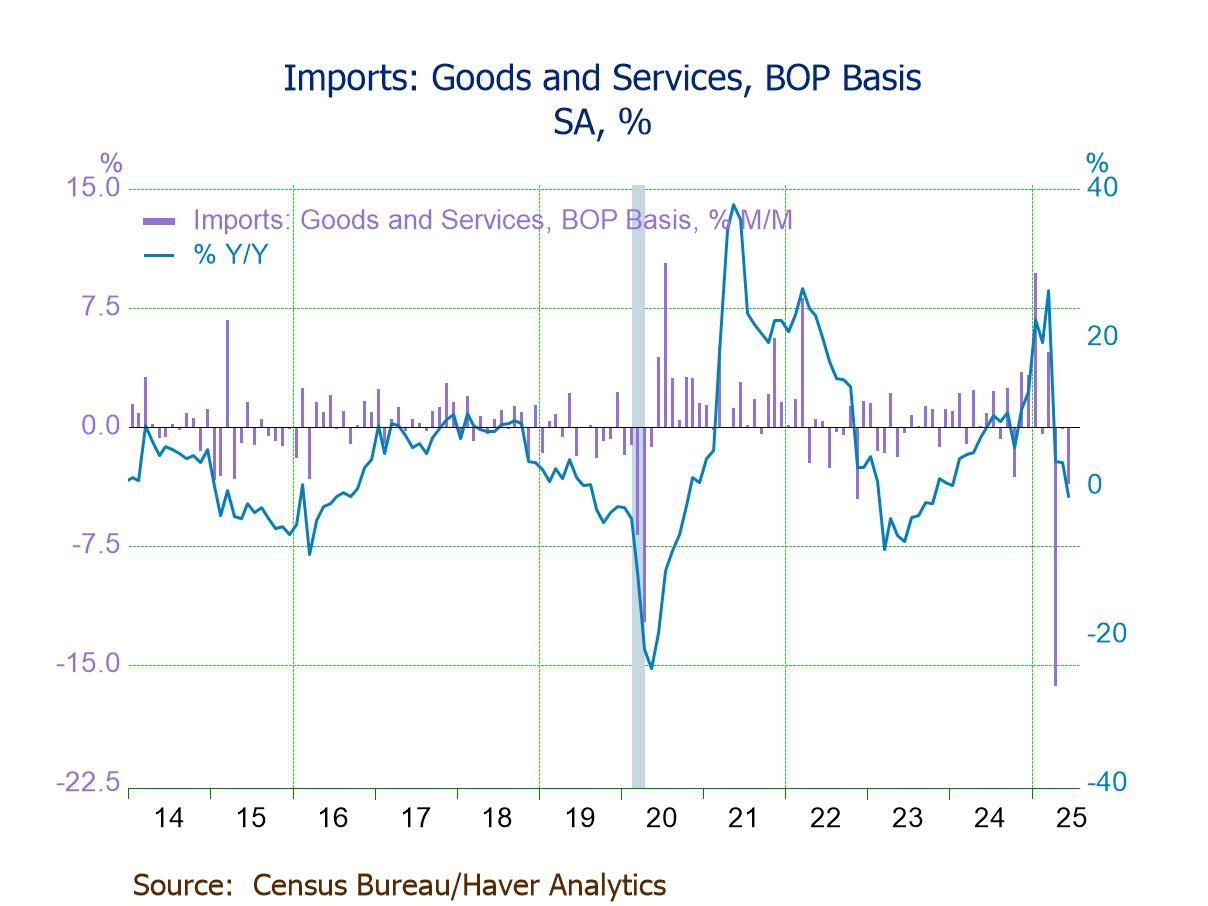
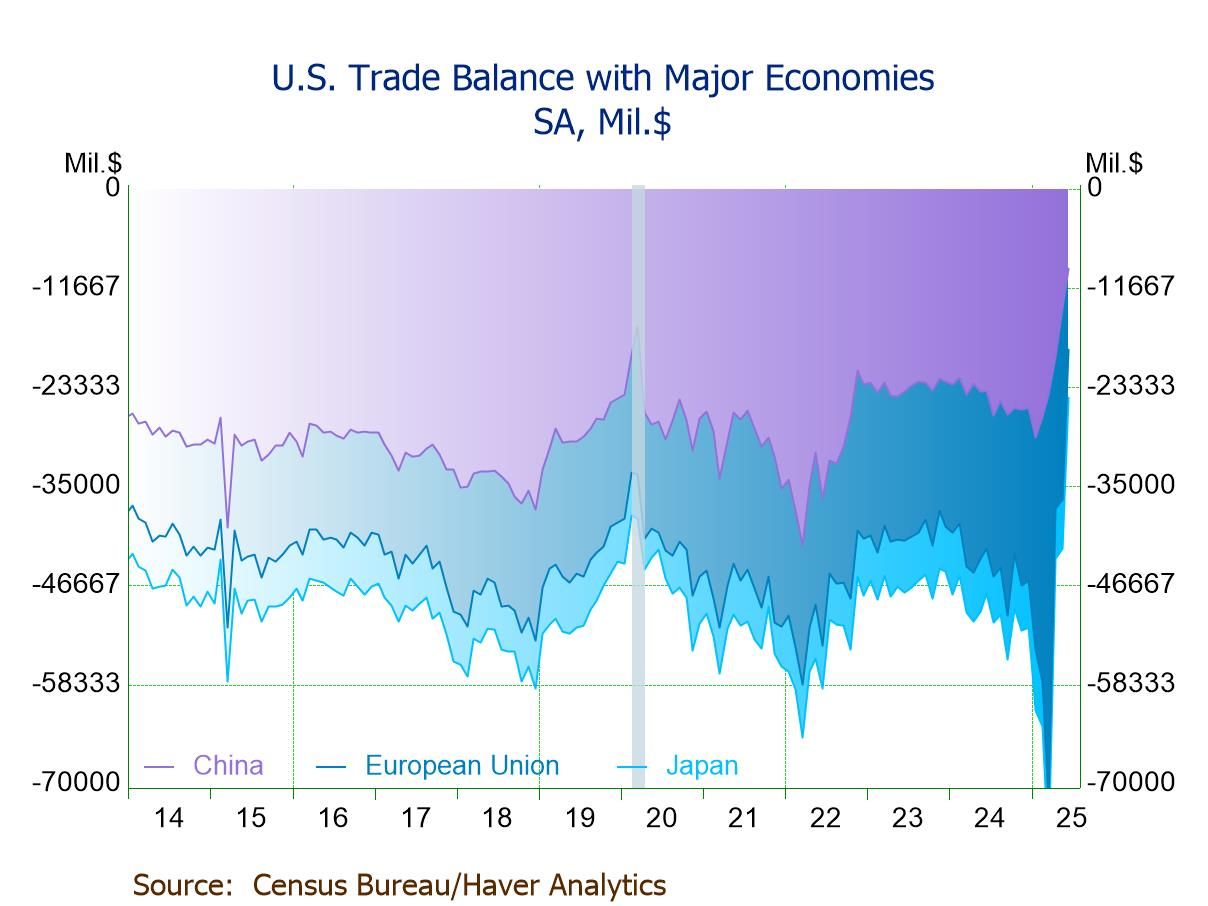
Winnie Tapasanun
AuthorMore in Author Profile »Winnie Tapasanun has been working for Haver Analytics since 2013. She has 20+ years of working in the financial services industry. As Vice President and Economic Analyst at Globicus International, Inc., a New York-based company specializing in macroeconomics and financial markets, Winnie oversaw the company’s business operations, managed financial and economic data, and wrote daily reports on macroeconomics and financial markets. Prior to working at Globicus, she was Investment Promotion Officer at the New York Office of the Thailand Board of Investment (BOI) where she wrote monthly reports on the U.S. economic outlook, wrote reports on the outlook of key U.S. industries, and assisted investors on doing business and investment in Thailand. Prior to joining the BOI, she was Adjunct Professor teaching International Political Economy/International Relations at the City College of New York. Prior to her teaching experience at the CCNY, Winnie successfully completed internships at the United Nations. Winnie holds an MA Degree from Long Island University, New York. She also did graduate studies at Columbia University in the City of New York and doctoral requirements at the Graduate Center of the City University of New York. Her areas of specialization are international political economy, macroeconomics, financial markets, political economy, international relations, and business development/business strategy. Her regional specialization includes, but not limited to, Southeast Asia and East Asia. Winnie is bilingual in English and Thai with competency in French. She loves to travel (~30 countries) to better understand each country’s unique economy, fascinating culture and people as well as the global economy as a whole.



